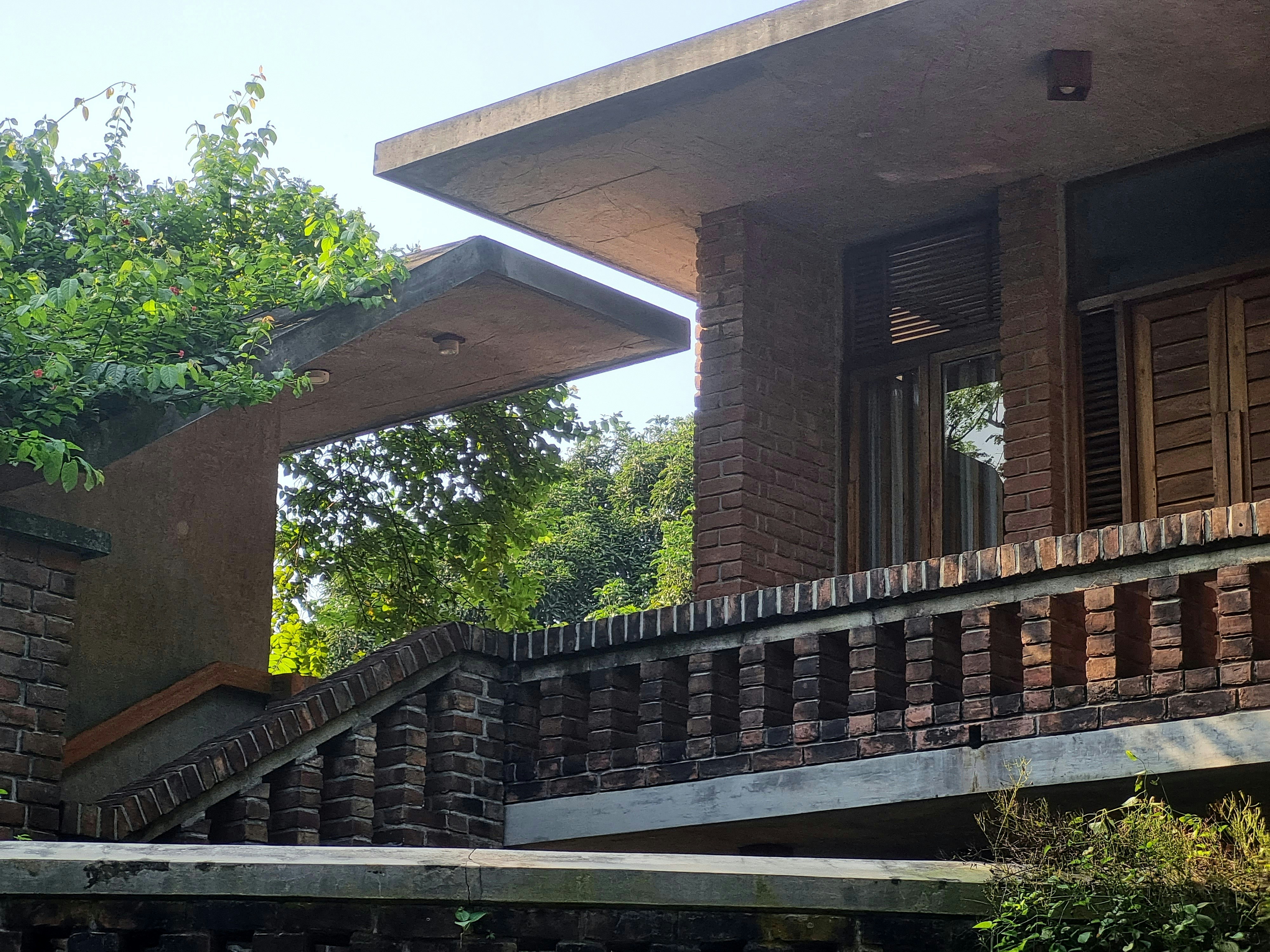Understanding Biomimetic Architecture
Biomimetic architecture represents a revolutionary approach to building design, wherein architects derive inspiration from nature and its myriad forms. This innovative field implements the principles of biomimicry, which examines the strategies evolved by various organisms over billions of years to address specific challenges. By studying these natural designs, architects can replicate efficient systems in human structures, leading to more effective and sustainable buildings.
The relationship between nature and architecture is fundamentally rooted in the understanding that natural processes often implement efficient solutions to environmental challenges. For instance, the design of a building may mimic the insulating properties of termite mounds or the energy-efficient features of plant leaves. This union not only optimizes the utility of space but also enhances the building’s connection to its environment, promoting an ethos of harmony between human-made structures and the natural world.
Adopting biomimetic architecture significantly emphasizes the importance of eco-friendly and sustainable building techniques. These designs typically incorporate materials and systems that minimize environmental impact, utilizing renewable resources and reducing waste throughout the lifecycle of a structure. As a result, this architectural approach fosters improved energy efficiency, which can markedly lower operational costs and carbon footprints. Furthermore, the resilience of biomimetic buildings is noteworthy, as they are often better equipped to withstand the impacts of climate change, natural disasters, and other environmental stresses.
The myriad benefits of integrating biomimetic principles into architectural practice resonate particularly with high net worth individuals, who often seek investments that possess sustainable and ethical dimensions. By aligning their projects with environmental consciousness, they not only affirm their commitment to sustainability but also enhance the long-term value of their investments while contributing positively to global ecological challenges.
Successful Biomimetic Designs
Biomimetic architecture has gained recognition for its ability to merge natural inspirations with cutting-edge technology, resulting in buildings that are not only visually stunning but also environmentally sustainable. Several noteworthy case studies exemplify the successful implementation of biomimetic principles in modern architecture.
The Eden Project in the United Kingdom serves as a prominent example of biomimetic design. This extraordinary complex encompasses multiple geodesic domes housing biomes that replicate various global climates and ecosystems. Inspired by the way natural ecosystems function, the architects utilized a transparent ETFE (ethylene tetrafluoroethylene) material, which allows for maximum sunlight exposure while offering insulation comparable to conventional materials. This innovative design not only creates an ideal environment for diverse plant species but also promotes energy efficiency, demonstrating how architecture can harmonize with nature.
Another remarkable case study is the Eastgate Centre in Zimbabwe, designed by architect Mick Pearce. The concept for this shopping and office complex draws inspiration from termite mounds, which maintain a stable internal temperature through natural ventilation. By incorporating passive cooling techniques that mimic the mound structures, the Eastgate Centre has drastically reduced the need for mechanical cooling systems. This not only conserves energy but also results in significant cost savings for the building’s occupants. The project highlights how observing and interpreting natural systems can lead to practical architectural solutions that address climate-responsive building challenges.
These case studies underline the potential of biomimetic architecture to reshape the way we design and build. By examining the intricacies of natural phenomena, architects can create innovative structures that not only meet aesthetic standards but also prioritize sustainability and environmental responsibility. As the demand for eco-friendly buildings continues to grow, the influence of biomimicry in architecture is likely to expand, offering a promising avenue for future design endeavors.
The Future of Architecture: Trends in Biomimetic Design
The rapidly evolving field of biomimetic architecture represents a ground-breaking approach to building design, effectively merging nature with the built environment. Emerging trends are reshaping the architectural landscape, emphasizing the importance of sustainability and innovation. One notable trend is the advancement of material technology that closely mimics natural forms and functions. For instance, researchers are developing new materials inspired by the structural efficiency of natural elements such as spider silk and shells. These materials are not only lightweight and durable but also promote energy efficiency, which is pivotal in urban construction. As these technologies become more accessible, they enable architects to create structures that are more responsive to environmental conditions.
Furthermore, collaborative interdisciplinary approaches are gaining momentum in the realm of biomimetic design. Architects are increasingly working with biologists and ecologists to better understand natural systems and apply these insights to their designs. This collaboration facilitates the creation of buildings that harmonize with local ecosystems, minimizing ecological footprints while maximizing functionality. By considering the complexities of natural environments, architects can create spaces that are not only aesthetically pleasing but also ecologically viable, further promoting sustainability in urban planning.
The growing movement towards regenerative architecture also signifies a fundamental shift in how buildings are conceptualized. This approach prioritizes restorative practices that breathe life back into the environment rather than merely sustaining it. With high net worth individuals increasingly focusing on environmental stewardship and luxury living, there is a clear demand for innovative designs that reflect these values. Investing in biomimetic architecture not only aligns with personal values but also highlights a commitment to forward-thinking solutions that consider both human and ecological wellbeing. This alignment positions the future of architecture to embrace a holistic integration of nature, technology, and human needs.
Investing in Biomimetic Architecture: Benefits and Opportunities
Investing in biomimetic architecture presents a myriad of financial and ecological advantages that resonate particularly well with high net worth individuals. As the world increasingly prioritizes sustainability, the demand for buildings that harmoniously integrate natural elements continues to rise, paving the way for lucrative investment opportunities in this innovative sector. These structures not only mirror the efficiency and resilience found in nature but also represent a compelling option for discerning investors looking to enhance their portfolios.
One of the most significant benefits of investing in biomimetic architecture is the potential for long-term savings. Buildings designed using these principles often feature energy-efficient systems that drastically reduce utility costs. For instance, implementing natural ventilation or solar energy solutions inspired by ecosystems can lower operational expenses while providing the comfort and aesthetic appeal that tenants and homeowners value. By investing in such sustainable projects, investors can anticipate a steady return on their investment, amplified by the growing market demand for eco-friendly properties.
Moreover, properties that incorporate biomimetic design elements tend to have enhanced resale value due to the integration of innovative, desirable features that attract environmentally-conscious buyers. Luxury eco-friendly homes and commercial spaces, characterized by their sustainable materials and nature-inspired design, are increasingly sought after, making them an appealing option for investment. As the trend toward biophilic design becomes mainstream, investors are strategically positioned to capitalize on this burgeoning market.
In addition, the evolution of government regulations favoring sustainable development creates a favorable environment for investments in biomimetic projects. Incentives such as tax breaks or grants for green building initiatives further amplify the financial appeal, offering yet another layer of opportunity for affluent stakeholders. As the momentum for biomimetic architecture grows, the potential for significant profits while promoting ecological stewardship becomes increasingly evident, paving the way for future projects that prioritize sustainability and elegance.





